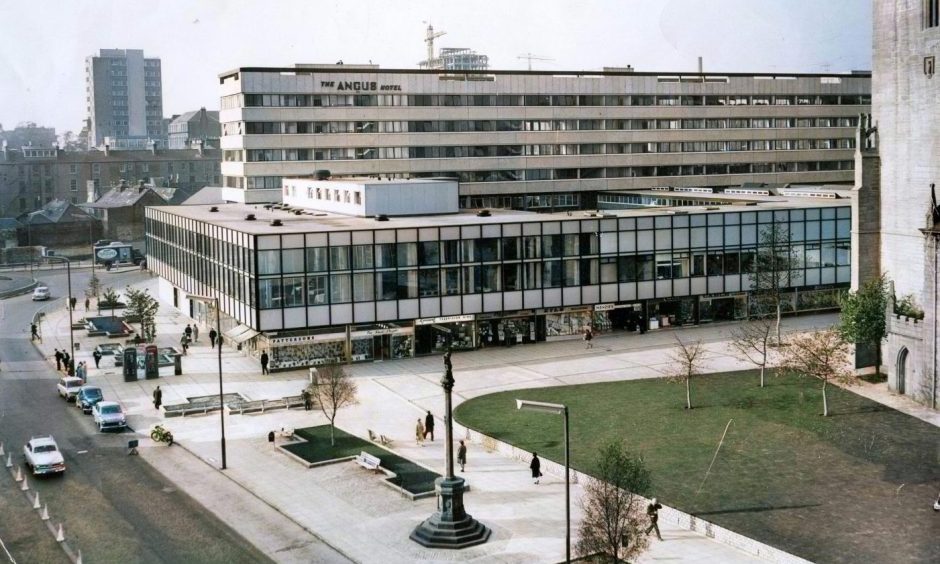
These images capture the spirit of Dundee in the 1960s.
The black and white photographs from DC Thomson’s archives have been enhanced and colourised using advanced AI technology.
The city was on the brink of change.
Mass demolition and redevelopment gutted Dundee.
Some classic tenement buildings fell foul of the demolition ball.
Parts of the city were wiped off the map, including the old Overgate.
Much of Dundee’s historic city centre vanished and this included the city’s first purpose-built cinema and the triumphal Royal Arch, which stood from 1869.
Also sadly demolished was the Dundee West Station.
Its loss is still lamented.
Progress or cultural vandalism?
High-rise blocks appeared on the skyline.
Housing schemes were built on the outskirts of the city and this new era brought the construction of the Tay Road Bridge and the Overgate Centre.
Sometimes, change happens when you’re not looking.
Rewind 60 years and take a stroll through a changing Dundee.
The way it was…
Hilltown
This 1960 shot of Dundee’s Hilltown was taken to illustrate new road signs which had appeared on either side of the street.
It also offers a view of the exterior of the Windmill Bar where sphinx-like figureheads looked down on the passing populace from above the windows.
Slightly down the hill was the entrance to the Plaza, which brought the sunshine and glamour, lavish locations and gorgeous gowns of Hollywood to the Hilltown.
The Plaza became a bingo hall after falling attendances in 1972 and was knocked down in 1996 to make way for a housing development.
South Lindsay Street
South Lindsay Street in January 1961.
D. McInnes was an optician and photographic dealer offering “beauty and style in spectacles and eyeglasses”, alongside Kodak cameras.
Kidd’s Ballroom was next door and was used mainly for private functions but opened its doors on Saturday night to a horde of eager youngsters.
The queue for dancing stretched almost to the Overgate.
Victoria Bridge
The number 18 from Kirkton heading down Victoria Bridge in February 1961.
The bus is passing the Eagle Jute Mills where a large wooden eagle was the centrepiece of the Baxter family business, which was extended in 1930.
It was described as “the finest in the world” and occupied the site between Victoria Street, Dens Road, Lyon Street and Brown Constable Street.
A hairdresser was directly opposite the shop and is still there today.
Shore Terrace
A picture of Shore Terrace in February 1961 that gives a side view of the Royal Arch.
On the left is the Shore Terrace bus stance where many of the city’s services ran to and from for more than 40 years, before finally closing in March 1971.
Shore Terrace is fondly remembered also for the City Arcade, which was directly underneath the Caird Hall and became an institution for shoppers.
The building in the background dates from 1828 and was the premises of David Winter and Son, who were booksellers, stationers and printers.
Reform Street
Reform Street in March 1963, and the familiar sight of jeweller H. Samuels.
As you walk down Reform Street today it is hard to think that it was once a bustling street of shoppers with the stores filled with tailors and furriers.
One of the most famous stores in Dundee’s Savile Row was department store Cairds, which can be seen in our image and was down from Cooper & McKenzie.
Meldrum’s was a sports outfitters that sat next to Cairds.
Royal Arch
The Royal Arch in April 1963, before it became a bittersweet memory.
It stood at the junction of Dock Street and Shore Terrace and was erected to commemorate Queen Victoria and Prince Albert visiting the city in 1844.
A winding stair led to the 84-foot summit.
Its original red brickwork was blackened by years of pollution by the time the structure was demolished in March 1964 to make way for the new road bridge slip roads.
Whorterbank estate
The Whorterbank area was Dundee’s housing utopia with its high-rise blocks, lower maisonette buildings and miniature shopping precinct.
Whorterbank in Lochee was described in 1963 as “one of the most modern housing areas in Scotland” following a redevelopment that cost more than £400,000.
The Whorterbank shops had maisonette houses above and among the early occupants was Ethel Donaldson’s newsagents, which had relocated from Lochee High Street.
Most of the Whorterbank development is still standing.
Swan Tavern
The Swan Tavern stood at the junction of the Overgate and Barrack Street.
Located nearby was the New Imperial Hotel, Franchi’s restaurant and Greenhills chemist shop, which offered sarsaparilla drinks.
October 1963 marked the completion of the £750,000 first phase of the £2 million scheme to modernise Dundee’s city centre.
The Swan Tavern was knocked down when the crumbling tenements were replaced by a shopping centre in the name of progress.
Dundee West Station
The final days of the Dundee West Station in May 1965.
It was demolished to allow for the construction of approach roads to the Tay Road Bridge.
The last train left on May 1 1965 – the 8pm to Glasgow – and more than 200 people gathered to wave it off before the station was demolished the following year.
Author John Minnis described the demolition of the station building as “perhaps the most tragic loss” of a piece of railway architecture in Scotland.
Old Overgate
The old Overgate in Dundee was “the street of streets”.
This photograph, from September 1965, shows the Central Restaurant on the right alongside the William Low grocery store.
The Central Restaurant used to sell sportsman’s lunch boxes for football fans, which included a pork pie, a tart, fruit bun and a biscuit to take away.
A three-course lunch was soup, steak and kidney pie with vegetables and trifle.
The Angus
Ready to check in to The Angus?
David Bowie, Billy Connolly, Freddie Mercury and Margaret Thatcher all marched through the lobby of the famous hotel over the years.
A million bricks and 1,000 tons of structural steel were used in the building of the hotel, which was part of the Overgate redevelopment scheme.
It was demolished in 1998 when the shopping centre was redeveloped.
Wellgate Steps
The old Wellgate formed a busy, bustling approach from the Murraygate to the Wellgate Steps and the Hilltown before the shopping complex opened.
The demolition of the Wellgate area began in 1972.
The first model of the proposed Wellgate development was unveiled in 1973.
Construction work started in 1975 and was starting to take shape by 1977.
The old Wellgate steps were partially demolished during construction work.
Whitfield
The city expanded into the suburban development of green fields.
The Whitfield estate was built from 1967 to accommodate the expanding population.
The huge Whitfield scheme included 2,459 deck-access dwellings built by Crudens in Skarne construction between 1968 and 1972.
Several streets were named after areas of East Lothian where Crudens were based, including Haddington Avenue, Berwick Drive and Dunbar Crescent.
It’s the final image in our gallery, which brings home just how much has happened in a relatively short period and how the face of the city has changed.
- ALL IMAGES IN THIS ARTICLE ARE COPYRIGHT OF DC THOMSON AND HAVE BEEN COLOURED USING ADVANCED AI. COLOUR REPRODUCTION MAY NOT BE 100% AUTHENTIC. UNAUTHORISED REPRODUCTION IS NOT PERMITTED.
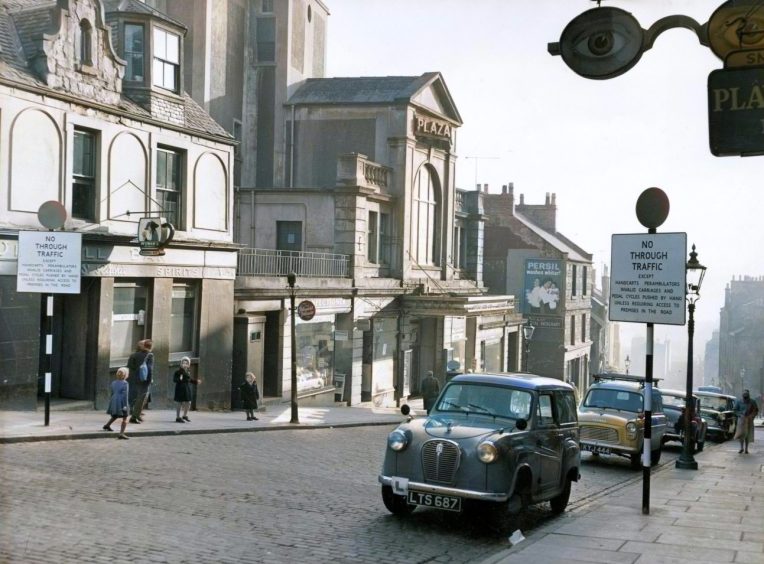
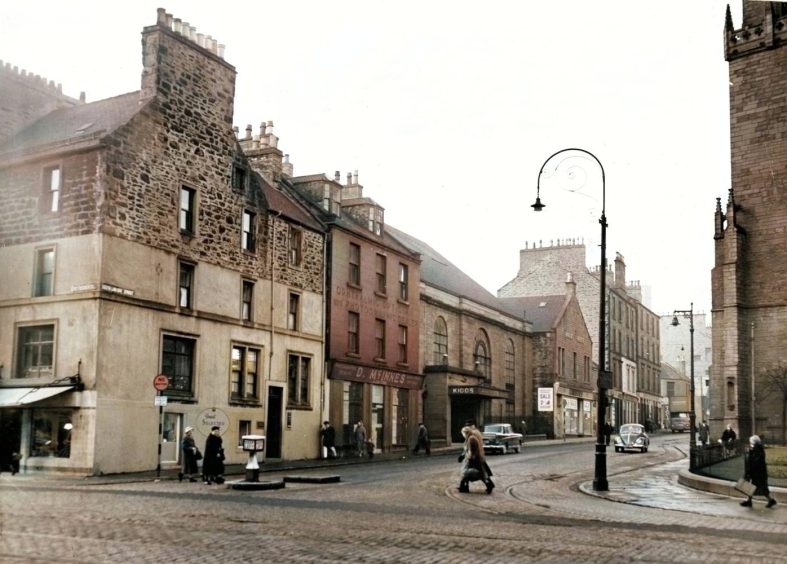
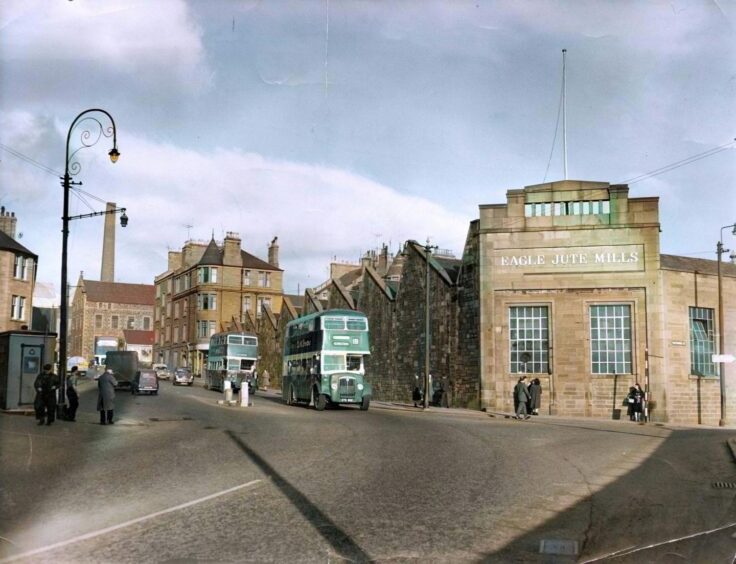
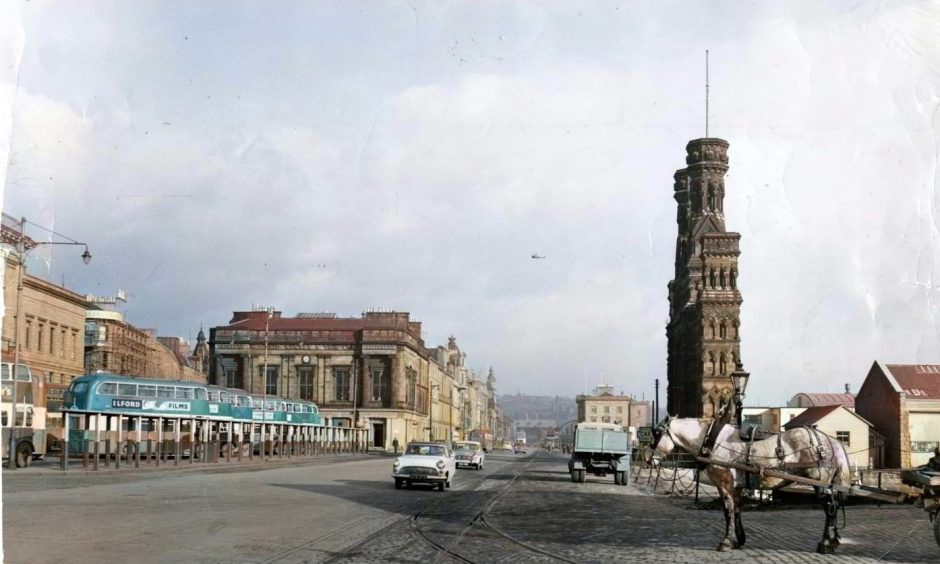
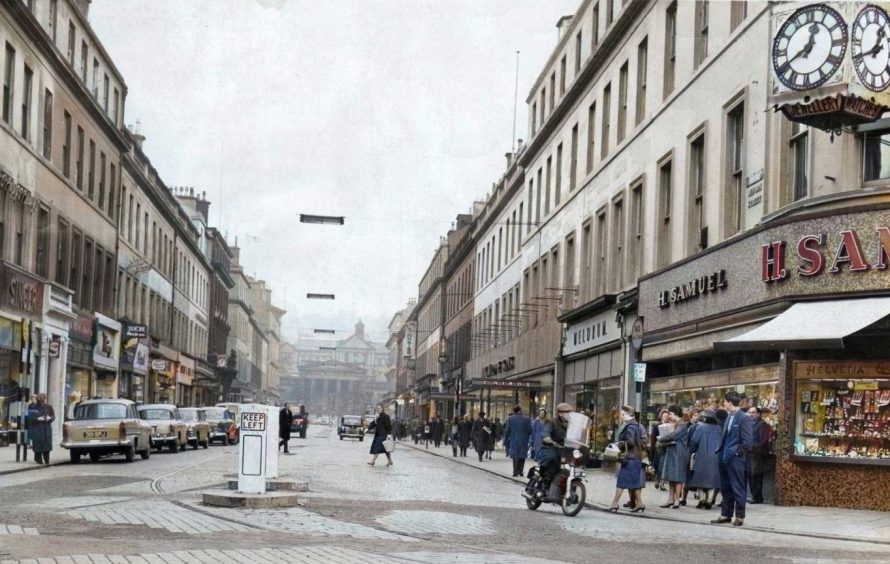
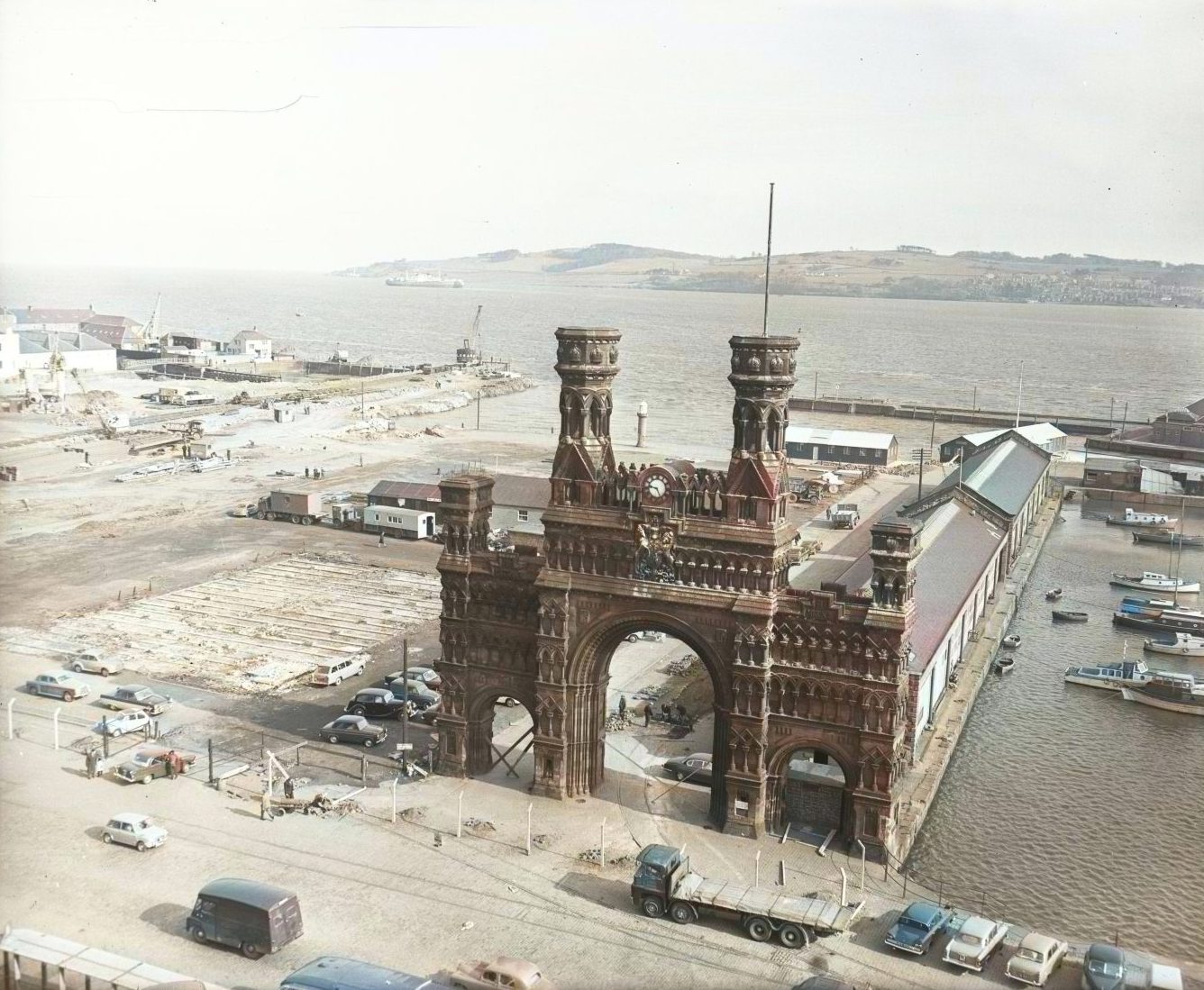
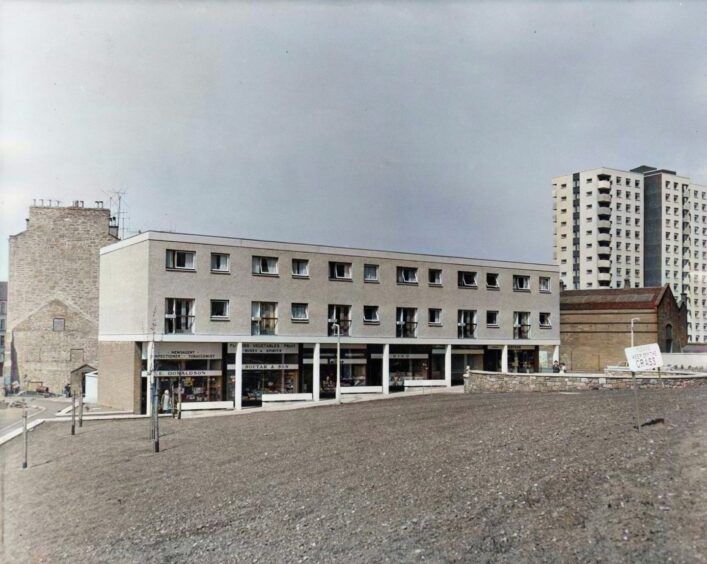
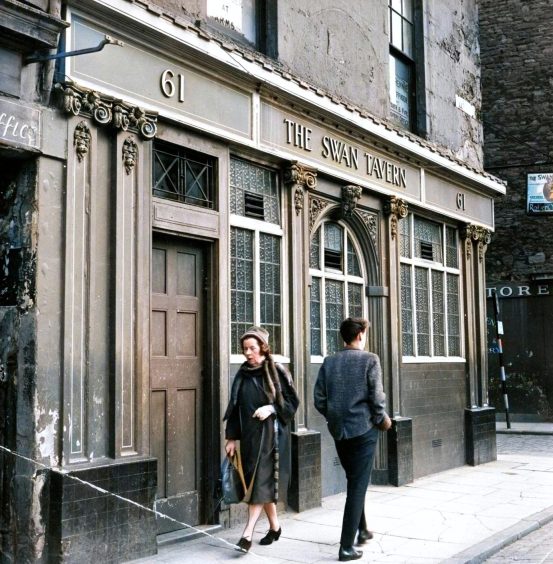
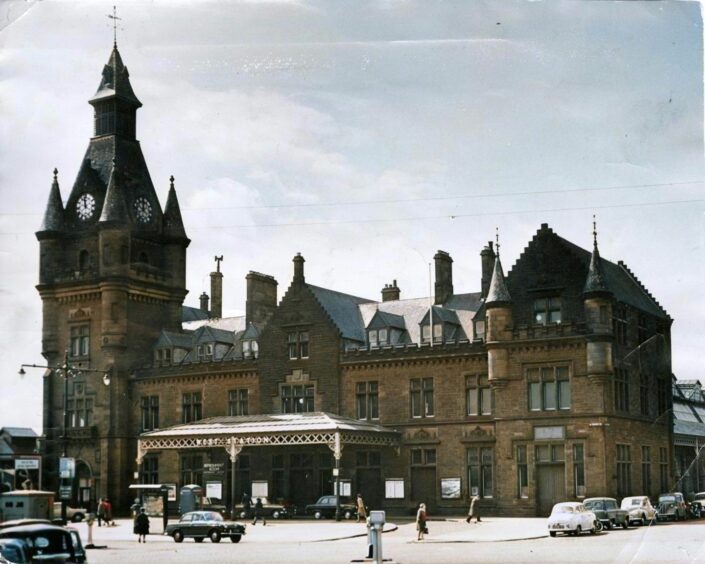
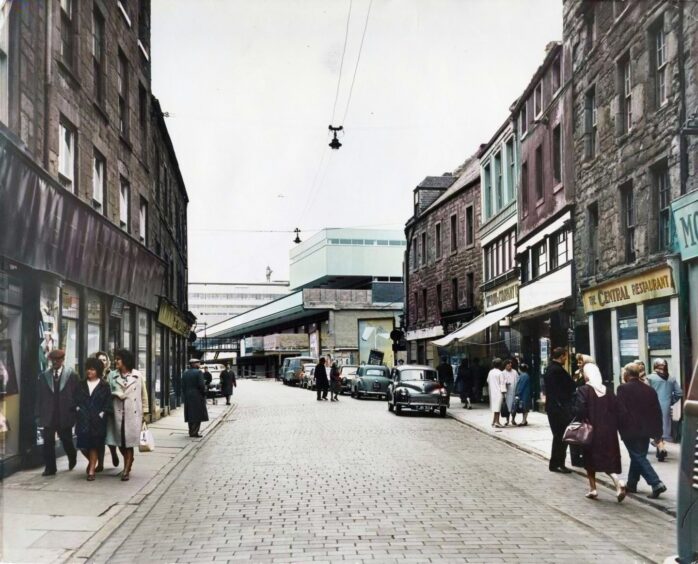
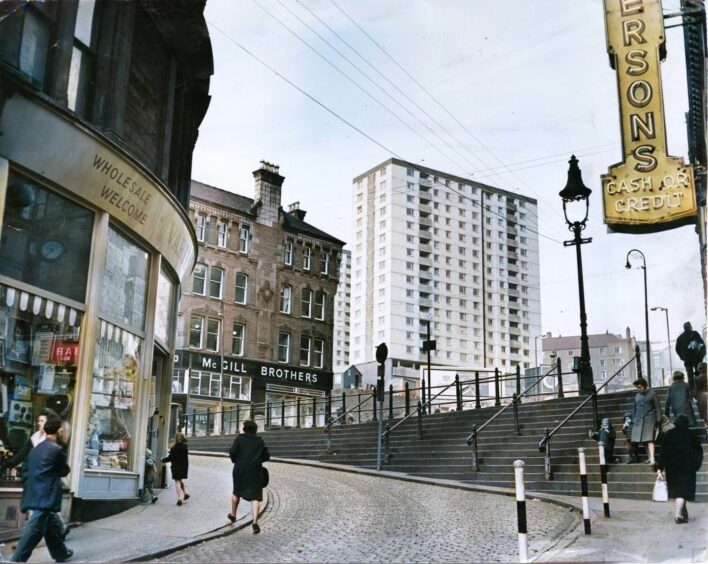
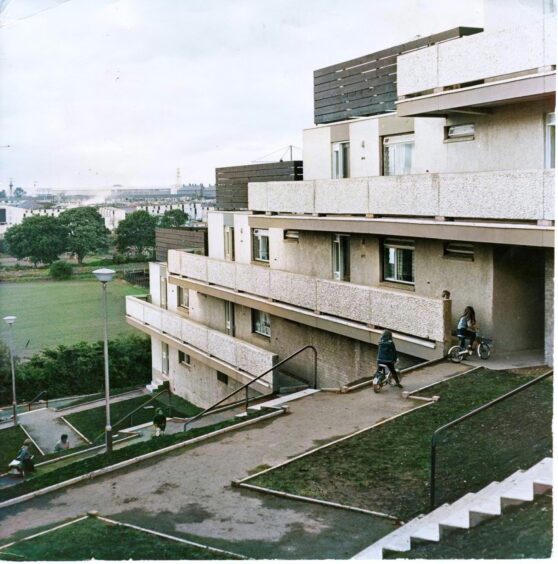










Conversation